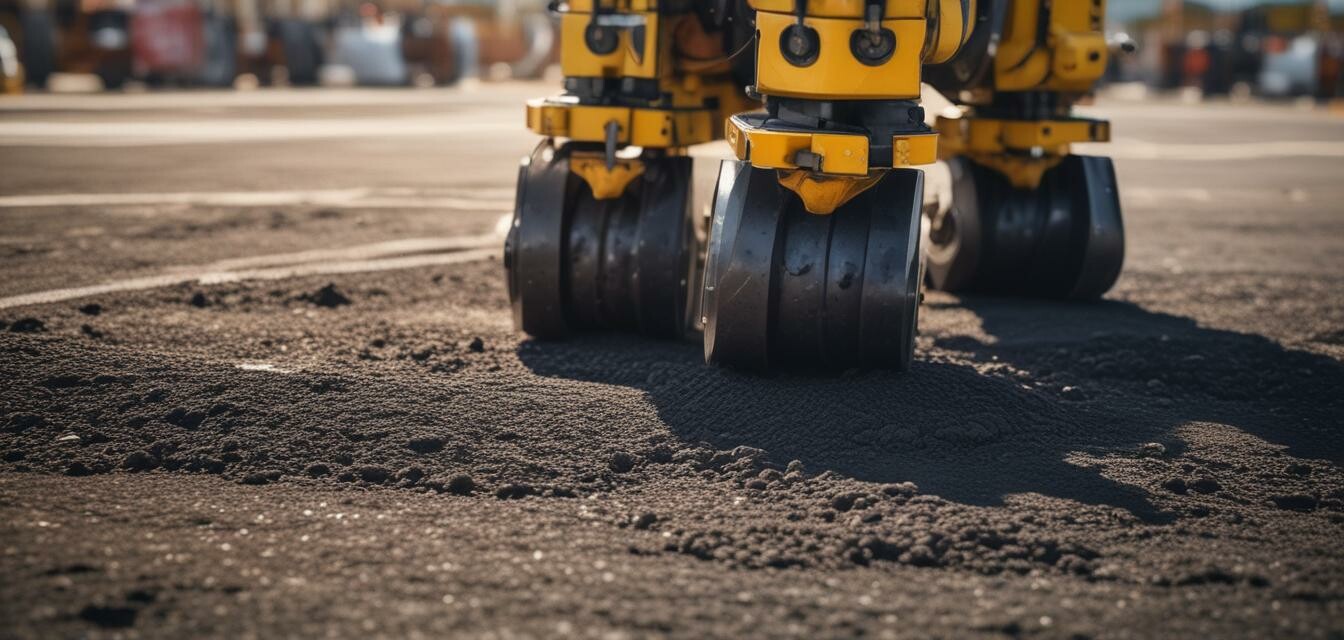
Guide to Asphalt Compaction: Techniques and Tips
Key Takeaways
- Understanding asphalt compaction is crucial for achieving optimal density.
- Different compaction techniques can affect the performance of your paving project.
- Choosing the right equipment enhances efficiency and results.
- Always follow best practices for safety when handling compaction machinery.
- Post-compaction maintenance ensures long-lasting asphalt performance.
Achieving optimal asphalt density and performance is critical for any paving project. Proper asphalt compaction techniques not only contribute to the durability and longevity of the pavement but also enhance the overall aesthetic appeal. In this guide, we’ll explore various compaction techniques, equipment, and essential tips that will help both novice and experienced contractors ensure successful asphalt paving outcomes.
Understanding Asphalt Compaction
Asphalt compaction is a process that increases the density of asphalt to enhance its performance and longevity. When asphalt is laid, it's in a hot, workable state, making it susceptible to various environmental factors. Adequate compaction is essential to minimize air voids, ensure uniform density, and increase load-bearing capacity.
Why is Compaction Important?
- Increases density, thereby improving strength and durability.
- Reduces the risk of cracking and deformation.
- Enhances the smoothness and aesthetic quality of the surface.
- Improves the overall performance under traffic loads.
Techniques for Effective Asphalt Compaction
There are several techniques used in asphalt compaction that can significantly affect the outcome of your paving project. Below are some of the most common methods:
| Technique | Description |
|---|---|
| Static Rolling | Utilizes the weight of the roller to compress asphalt without vibrations. Best for small areas. |
| Vibratory Rolling | Employs vibrations in addition to weight to achieve a higher density, suitable for larger surfaces. |
| Combination Rolling | Involves both static and vibratory methods to achieve optimal compaction results. |
| Pneumatic Rolling | Uses rubber-tired rollers that provide flexibility and can reduce surface cracking. |
Best Practices for Compaction Techniques
Regardless of the technique you choose, some best practices will help ensure effective compaction:
- Ensure the asphalt is at the right temperature during initial rolling.
- Begin rolling as soon as possible after asphalt is laid to prevent cooling.
- Overlap your passes to avoid un-compacted seams.
- Adjust the roller speed to match the asphalt's temperature and thickness.
Selecting the Right Equipment
The type of equipment you use can significantly impact the efficiency of your compaction efforts. Here are key factors to consider:
| Equipment Type | Pros | Cons |
|---|---|---|
| Ride-on Rollers | High efficiency, suitable for large areas | More expensive, requires training |
| Walk-behind Rollers | Great for tight spaces, less costly | Slower, more labor-intensive |
| Pneumatic Rollers | Flexible, reduces cracking risk | Requires careful operation to avoid over-compaction |
| Tandem Rollers | Good for achieving smooth surfaces | Not ideal for uneven or sloped areas |
Safety Considerations
Safety is paramount when working with heavy machinery. Here are essential safety tips:
- Always wear appropriate safety gear such as helmets, gloves, and steel-toed boots.
- Ensure the work area is secure and free from unauthorized personnel.
- Inspect equipment before use to identify any faults.
- Keep a safe distance from moving machinery to avoid accidents.
Post-Compaction Maintenance
Once compaction is complete, it's important to maintain the asphalt surface. Here’s how:
- Regularly inspect for cracks and surface irregularities.
- Sealant applications can improve lifespan and performance.
- Keep the surface clean to prevent the buildup of oils and debris.
To learn more about maintaining your asphalt surfaces, check our maintenance equipment section.
Tips for Beginners
- Start small with manageable projects to gain confidence.
- Invest in reliable compaction equipment suited to your needs.
- Practice techniques with a focus on consistency.
Final Thoughts
Effective asphalt compaction is vital for achieving quality paving results. By understanding the techniques and equipment involved, and adhering to safety and maintenance practices, you can ensure that your asphalt projects stand the test of time. For further insights, don't hesitate to explore our how-to guides.
Pros
- Improves asphalt durability and lifespan.
- Enhances surface aesthetics and smoothness.
- Boosts overall performance under load.
Cons
- Requires investment in equipment and materials.
- Time-consuming if not planned properly.
- Learning curve for effective technique implementation.

